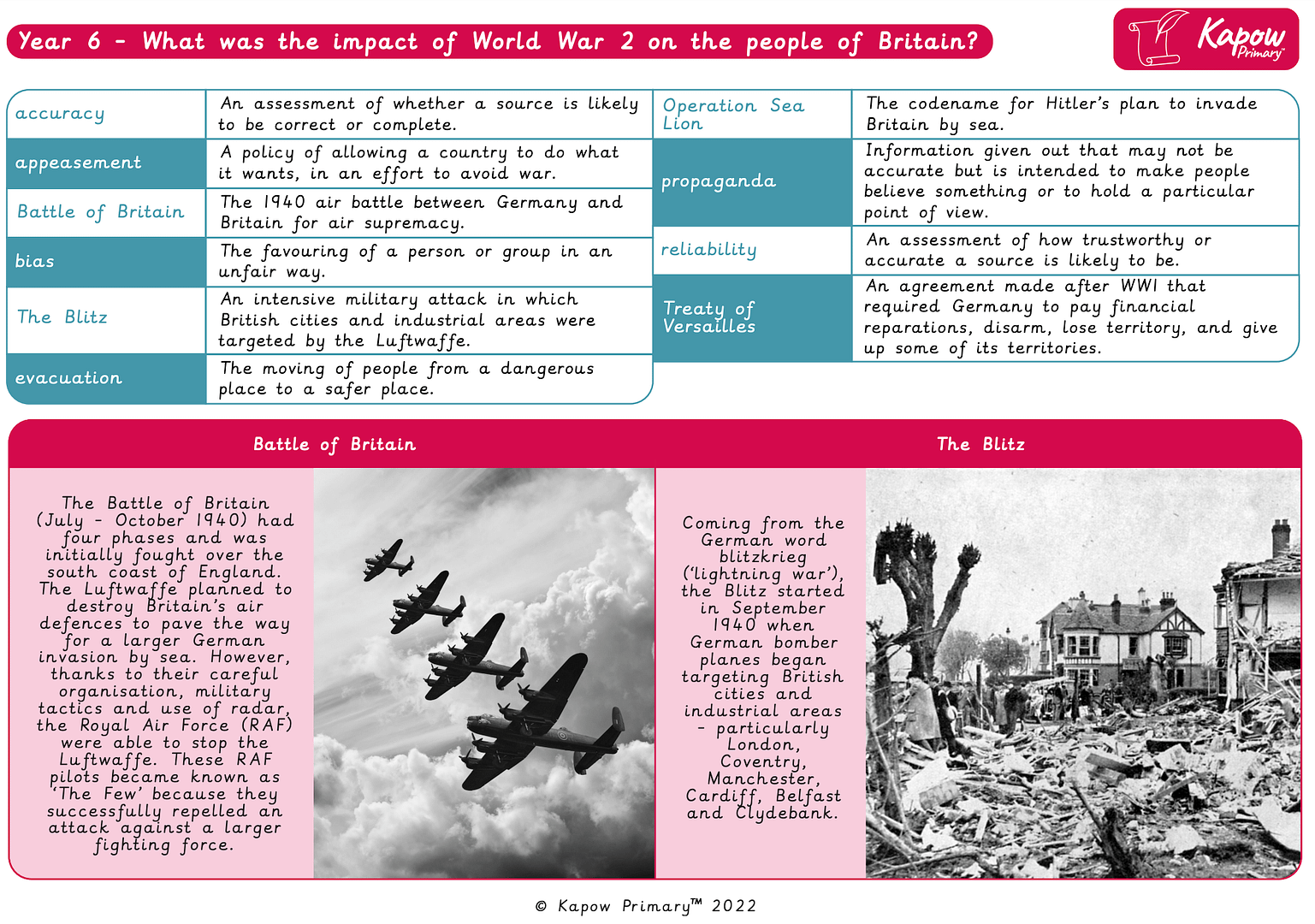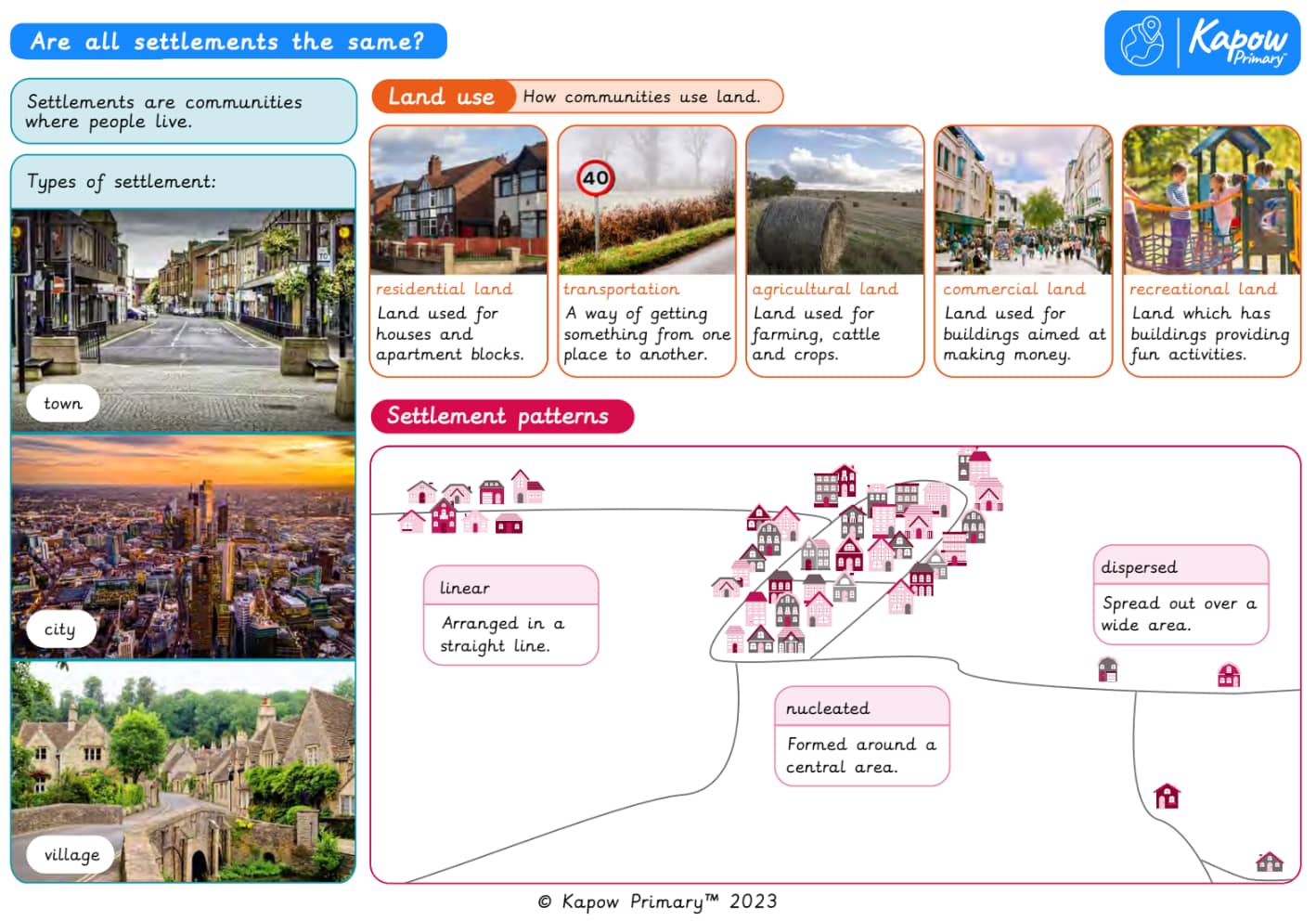
A Knowledge Organiser that captures the essential knowledge and skills learnt throughout the unit Geography, Year 3, Are all settlements the same?
This resource is designed to support pupils as they investigate the different types and features of human settlements. It introduces key terminology such as village, town, and city, and explores how land is used within these settlements—covering residential, commercial, agricultural, recreational, and transportation uses. Pupils also learn to recognise settlement patterns, including linear, nucleated, and dispersed arrangements. The unit encourages pupils to consider how and why communities are formed and how geography influences their development.
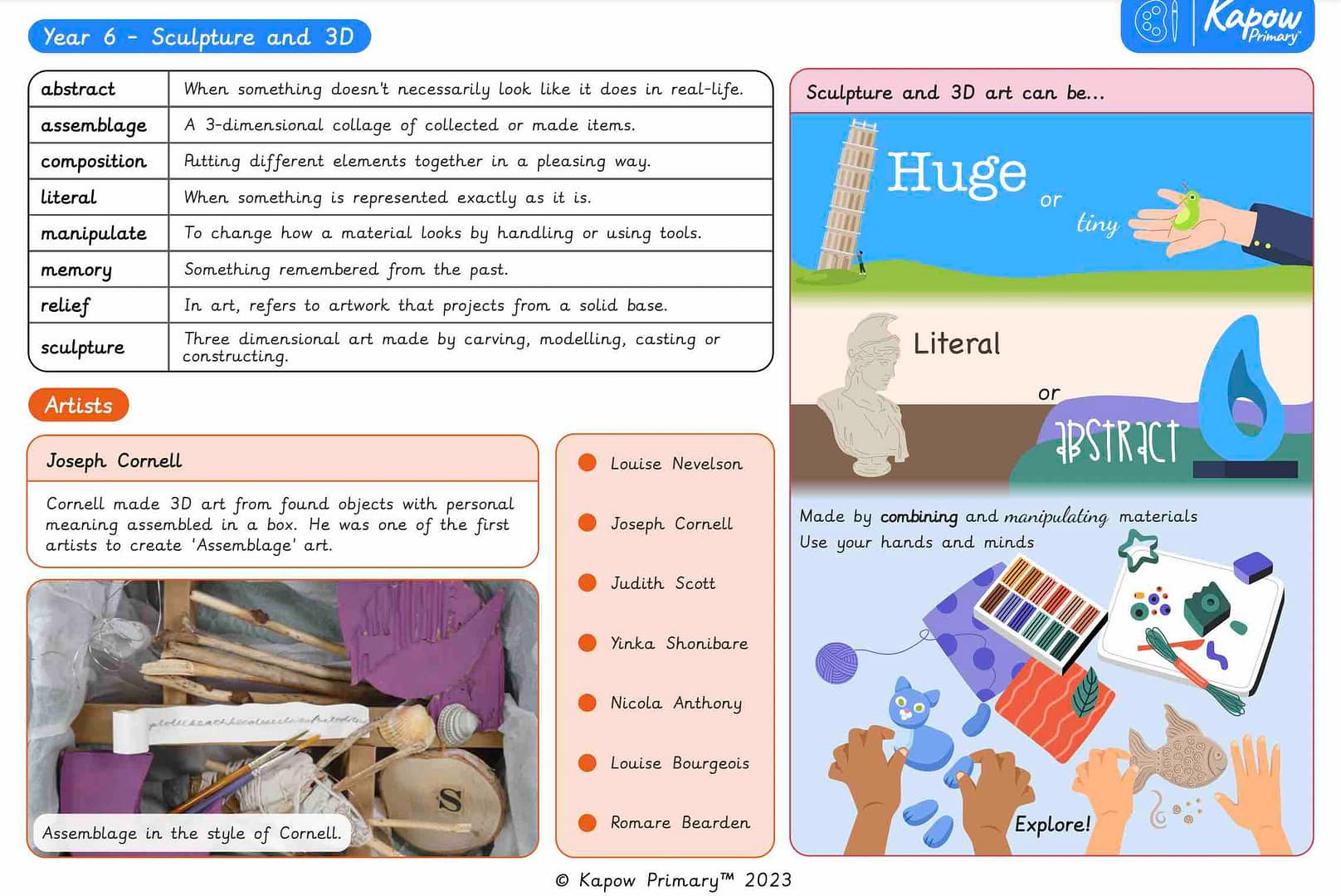
A Knowledge Organiser that captures the essential knowledge and skills learnt throughout the unit Art and Design, Year 6, Sculpture and 3D: Making memories.
This resource is designed to support pupils as they explore the expressive possibilities of sculpture through abstract and literal forms. It introduces key vocabulary including assemblage, manipulate, relief, and composition, while encouraging creative use of materials by combining and reshaping them into three-dimensional artworks. The organiser features influential artists such as Joseph Cornell—known for his personal assemblage boxes—and others including Judith Scott, Louise Bourgeois, and Yinka Shonibare. Pupils are guided to experiment with scale, symbolism, and memory in their creations, promoting hands-on exploration and artistic confidence.
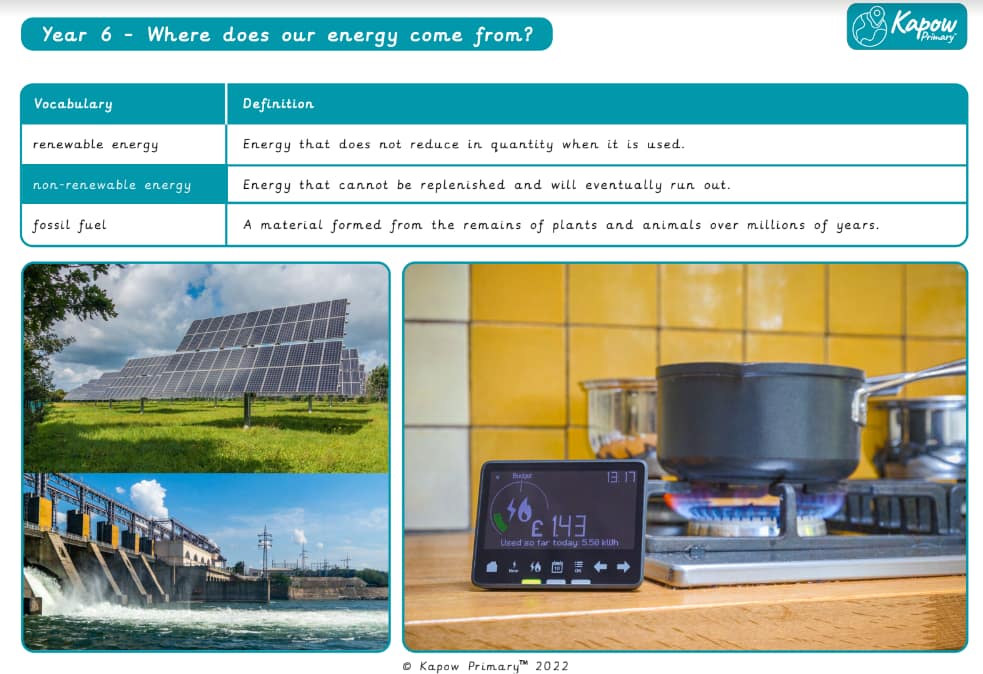
A Knowledge organiser that captures the essential knowledge and skills learnt throughout the unit Geography, Year 6, Where Does Our Energy Come From?
This Geography resource is designed to support the pupils as they explore different energy sources and their environmental impact. It introduces key vocabulary such as renewable, non-renewable, fossil fuels, and solar power, helping the pupils understand how energy is generated and used. The pupils will also learn about the advantages and disadvantages of different energy sources and how choices about energy consumption affect the planet.
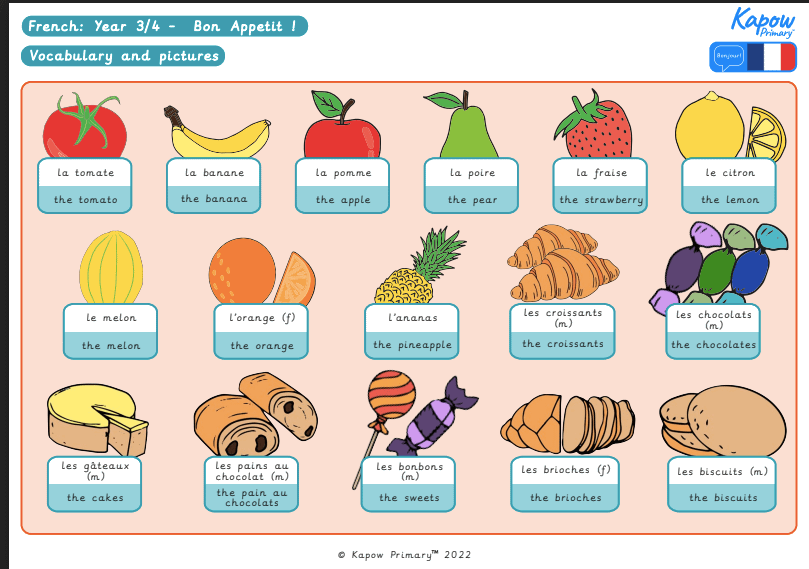
A Knowledge organiser that captures the essential knowledge and skills learnt throughout the unit French, Y3/4 Cycle A, Bon Appétit.
This French resource is designed to support the pupils as they explore vocabulary and phrases related to food, meals, and dining. It introduces key vocabulary such as fruits, vegetables, meals of the day, and common food-related expressions, helping the pupils develop their French-speaking, listening, and reading skills. The pupils will also learn how to order food, express preferences, and engage in simple conversations about meals.

A Knowledge Organiser that captures the essential knowledge and skills learnt throughout the unit Geography, Year 2, Why is our world wonderful?
This resource is designed to support pupils as they explore the diversity and beauty of our planet. Through world and UK maps, it introduces key geographical landmarks such as the Great Barrier Reef, Mount Etna, the Amazon Rainforest, and the Great Wall of China. Pupils also learn about the continents and oceans, as well as iconic UK sites like the Tower of London, Yr Wyddfa (Mount Snowdon), and Ben Nevis. The unit helps pupils develop spatial awareness and an appreciation for both natural wonders and human achievements, encouraging curiosity about the wider world.
Use this Y4 knowledge organiser to accompany the History topic ‘How hard was it to invade and settle in Britain?’ Support pupils with vocabulary, key knowledge, high-quality images and important dates.
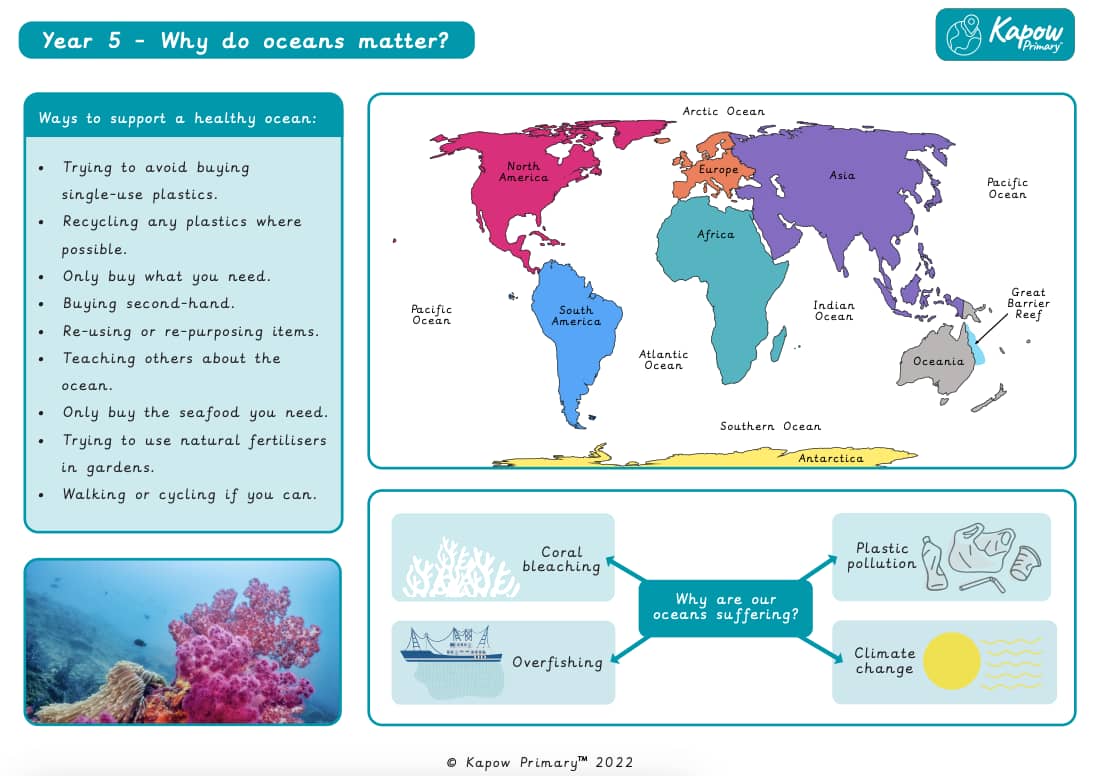
A Knowledge Organiser that captures the essential knowledge and skills learnt throughout the unit Geography, Year 5, Why do oceans matter?
This resource is designed to help pupils understand the vital importance of oceans to life on Earth. It introduces key vocabulary such as coral reef, overfishing, acidification and Marine Protected Area, and explores pressing environmental challenges including climate change, plastic pollution and coral bleaching. A world map helps pupils locate major oceans and continents, while clear sections explain the role of oceans in regulating climate, supporting biodiversity, and sustaining livelihoods. The unit encourages responsible action by offering practical ways pupils can support healthy oceans through their everyday choices.

A Knowledge organiser that captures the essential knowledge and skills learnt throughout the unit History, Y2, How did we learn to fly?
This resource is designed to support children as they explore the history of flight. It highlights key vocabulary, significant events, and notable figures in flight history, from the Wright brothers’ first flight to modern space exploration. Featuring a timeline, this Knowledge organiser helps children develop an understanding of technological progress and historical significance. It is perfect for reinforcing learning, building historical enquiry skills, and fostering curiosity about how humans have taken to the skies.




